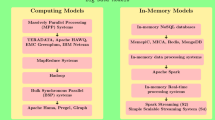Abstract
Erasable itemset mining, first proposed in 2009, is an interesting problem in supply chain optimization. The dPidset structure, a very effective structure for mining erasable itemsets, was introduced in 2014. The dPidset structure outperforms previous structures such as PID_List and NC_Set. Algorithms based on dPidset can effectively mine erasable itemsets. However, for very dense datasets, the mining time and memory usage are large. Therefore, this paper proposes an effective approach that uses the subsume concept for mining erasable itemsets for very dense datasets. The subsume concept is used to help early determine the information of a large number of erasable itemsets without the usual computational cost. Then, the erasable itemsets for very dense datasets (EIFDD) algorithm, which uses the subsume concept and the dPidset structure for the erasable itemset mining of very dense datasets, is proposed. An illustrative example is given to demonstrate the proposed algorithm. Finally, an experiment is conducted to show the effectiveness of EIFDD.
















Similar content being viewed by others
Notes
Downloaded from http://fimi.cs.helsinki.fi/data/
References
Agrawal R, Srikant R (1994) Fast algorithms for mining association rules In VLDB’94
Agrawal R, Imielinski T, Swami A (1993) Mining association rules between set of items in large databases In SIGMOD’93
Calders T, Dexters N, Gillis JJM, Goethals B (2014) Mining frequent itemsets in a stream. Inf Syst 39:233–255
Czibula G, Marian Z, Czibula IG (2014) Software defect prediction using relational association rule mining. Inf Sci 264:260–278
Deng ZH (2013) Mining top-rank-k erasable itemsets by PID_lists. Int J Intell Syst 28(4):366–379
Deng ZH, Xu XR (2012) Fast mining erasable itemsets using NC_sets. Expert Syst Appl 39(4):4453–4463
Deng Z, Fang G, Wang Z, Xu X (2009) Mining erasable itemsets In ICMLC’09
Deng ZH, Xu XR (2010) An efficient algorithm for mining erasable itemsets In ADMA’10:214–225
Han J, Pei J, Yin Y (2003) Mining frequent patterns without candidate generation In SIGMOD’00:1–12
Huynh-Thi-Le Q, Le T, Vo B, Le B (2015) An efficient and effective algorithm for mining top-rank-k frequent patterns. Expert Syst Appl 42(1):156–164
Pyun G, Yun U (2014) Mining top-k frequent patterns with combination reducing techniques. Appl Intell 41(1):76–98
Pyun G, Yun G, Ryu KH (2014) Efficient frequent pattern mining based on Linear Prefix tree. Knowledge-Based Syst 55:125–139
Le T, Vo B, Coenen F (2013) An efficient algorithm for mining erasable itemsets using the difference of NC-Sets In IEEE SMC’13:2270–2274
Le T, Vo B (2014) MEI: an efficient algorithm for mining erasable itemsets. Eng Appl Artif Intell 27:155–166
Le T, Vo B, Nguyen G (2014) A survey of erasable itemset mining algorithms. WIREs Data Min Knowl Disc 4(5):356–379
Li H, Zhang H, Zhu J, Cao H, Wang Y (2014) Efficient frequent itemset mining methods over time-sensitive streams. Knowl-Based Syst 56:281–298
Li Y, Wu J (2014) Interpretation of association rules in multi-tier structures. Int J Approx Reason 55(6):1439–1457
Liao VCC, Chen MS (2014) DFSP: a Depth-First SPelling algorithm for sequential pattern mining of biological sequences. Knowl Inf Syst 38(3):623–639
Lin KC, Liao I, Chang TP, Lin SF (2014) A frequent itemset mining algorithm based on the Principle of Inclusion-Exclusion and transaction mapping. Inf Sci 276:278–289
Nguyen G, Le T, Vo B, Le B (2014) A new approach for mining top-rank-k erasable itemsets. In ACIIDS’14
Nori F, Deypir M, Sadreddini MH (2013) A sliding window based algorithm for frequent closed itemset mining over data streams. J Syst Softw 86(3):615–623
Sohrabi MK, Barforoush AA (2013) Parallel frequent itemset mining using systolic arrays. Knowl-Based Syst 37:462–471
Song W, Yang B, Xu Z (2008) Index-BitTableFI: An improved algorithm for mining frequent itemsets. Knowl-Based Syst 21:507–513
Versichele M, Groote L, Bouuaert MC, Neutens T, Moerman I, Weghe NV (2014) Pattern mining in tourist attraction visits through association rule learning on Bluetooth tracking data: A case study of Ghent, Belgium. Tour Manag 44:67–81
Vo B, Coenen F, Le T, Hong T-P (2013) A hybrid approach for mining frequent itemsets In IEEE SMC’13:4647–4651
Vo B, Le T, Coenen F, Hong TP (2014) Mining frequent itemsets using the N-list and subsume concepts. International Journal of Machine Learning and Cybernetics. doi:10.1007/s13042-014-0252-2
Vo B, Hong TP, Le B (2013) A lattice-based approach for mining most generalization association rules. Knowl-Based Syst 45:20–30
Zaki MJ (2000) Scalable algorithms for association mining. IEEE Trans Knowl Data Eng 12(3):372–390
Zaki MJ, Gouda K (2003) Fast vertical mining using diffsets In SIGKDD’03
Zhang B, Lin CW, Gan W, Hong TP (2014) Maintaining the discovered sequential patterns for sequence insertion in dynamic databases. Eng Appl Artif Intell 35:131–142
Acknowledgments
This research is funded by Foundation for Science and Technology Development of Ton Duc Thang University (FOSTECT), website: http://fostect.tdt.edu.vn, under Grant FOSTECT. 2015.BR.01.
Author information
Authors and Affiliations
Corresponding author
Rights and permissions
About this article
Cite this article
Nguyen, G., Le, T., Vo, B. et al. EIFDD: An efficient approach for erasable itemset mining of very dense datasets. Appl Intell 43, 85–94 (2015). https://doi.org/10.1007/s10489-014-0644-8
Published:
Issue Date:
DOI: https://doi.org/10.1007/s10489-014-0644-8




